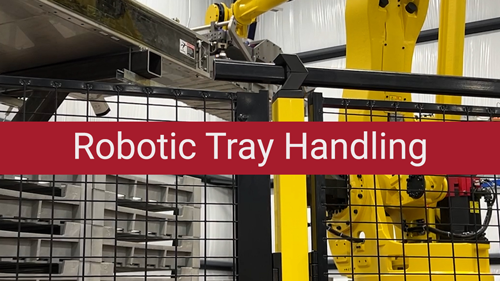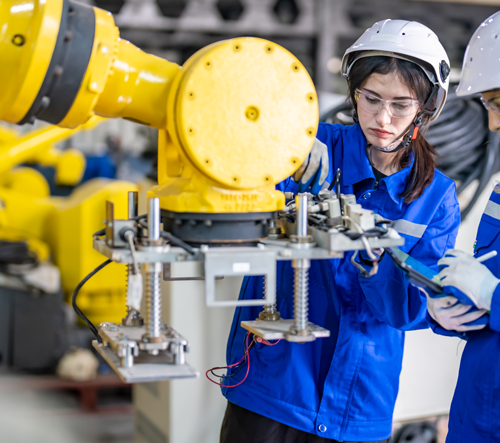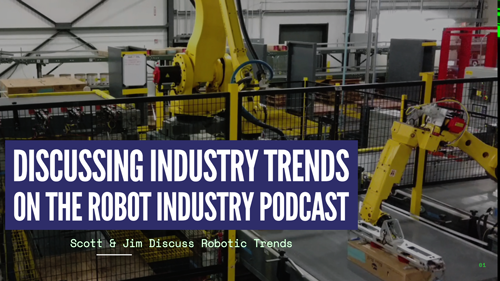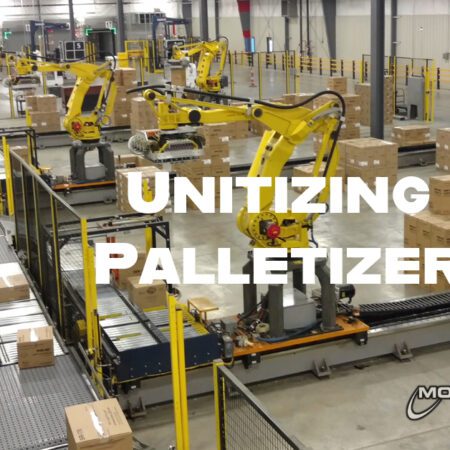When production errors are costing you time, money, and end-customer satisfaction, it might be beneficial to take a look at end of line automation solutions. There are various value add solutions that can be integrated into a total process solution.
Vision can be added to your end of line solution to:
- Locate
- Inspect/verify/measure
- Read
Robots ensure consistency in throughput, efficiency, and quality.
Database connectivity puts product tracking and sorting at your fingertips throughout the process.
Add these three together and you can:
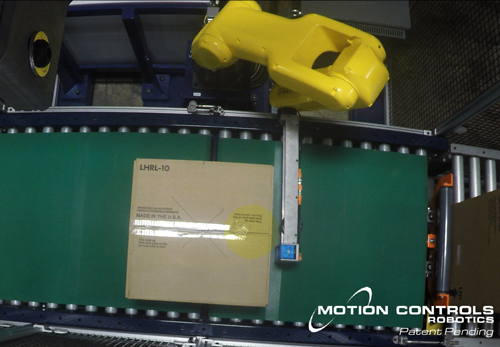
- Increase production consistency with standardized processes.
- Improve customer & product satisfaction.
- Reduce costs that result from order quality errors.
- Accomplish consistent regulatory compliance
Database connectivity, barcoding, and sensors/cameras all work together to make product tracking and order fulfillment quality easier to accomplish. Let’s take a look at a variety of examples we have implemented into end of line automation at Motion Controls Robotics. Each integration example solved a problem the manufacturer was having and made their entire process more efficient.
End of Line Tape Inspection
First, let’s take a look at tape inspection on finished cases. If you are robotically palletizing cases, you want to make sure the case stays intact during the palletizing process. If you send the product to a fulfillment or distribution center, you want to make sure the case tape is properly placed and will stay that way through transport. Robotic tape inspection can solve these issues by making sure cases are sealed to match your standards. Read more here about adding a Tape Inspection station to your end of line packaging.
Barcode Reading
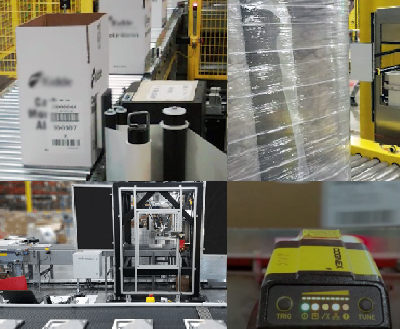
Cases then are scanned and directed as they move through the system.
Today the ability to track products through a system by continuously communicating between production steps and your database information has cost-effectively reached peak levels. Barcodes can be placed on erected cases at the beginning of the system and tracked all the way to the shipping dock. Examples of barcode tracking include:
- In your facility sorting and quality checks all along the journey.
- Then directing the product to the correct location for palletizing.
- Finally, making sure each pallet is sent to the correct location for delivery to your customer.
- Alternatively, barcodes can hold recipe data that we utilize to instruct the automation equipment on what task(s) are to be performed.
Case and Pallet Weight/Fill/Mix
Checking for correct weight, fill, or mix can be added as a quality check to systems we design and integrate. While most process lines already inspect for case weight and contaminants, very few record pass/fail data events for cases. And fewer still measure and record case fill (for product sold by volume, not weight), pallet weight, or product mix within a case or pallet.
- Weight – If you have cases that have a consistent programmatic weight, we can make sure that each case is at its proper weight and record case weight values in a database. Pass/fail criteria can be based on a barcode specification, product run, or a preprogrammed weight for the system.
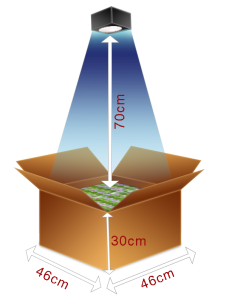
- Fill – If fill height is the variable you need to check, this can be accomplished by adding an automated check-in system. Basic checks can handle every case the same or bar code information can be used for reading individual case fill levels. Results can be recorded in a database as well.
- Mix – If your cases contain kits, then you need to make sure certain items are placed in the case along the packing process. Therefore this can be done through a variety of sensors mentioned above. Although, one we have yet to mention is an image match. A vision sensor/camera can look for a certain shape inside the case to make sure it has not been left out. Images can be stored in a database to allow fulfillment proof to your customer.
Product Picking
Consistently completing a full layer means your customer gets all the product they requested. We can ensure each layer of your pallet is complete with full layer checks, and provide proof of full layers/pallets for internal audits or end customer verification. We can add product sensors on the End of Arm tooling or we can utilize vision for 3D Pallet Inspection to verify object count per layer.
Color Sensor
A color sensor can be used to sort and direct different color products or labels to the proper location. For example, you place a red label on specific cases as they move through the bar code labeler. These red labels can be routed through the system using a defined path. For instance, red label cases need to move down conveyors 1-4 for packing, but blue cases move through 1,3,4,5.
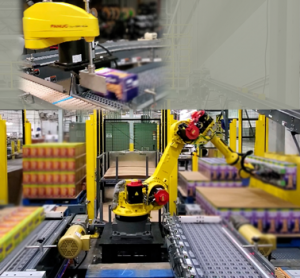
Non-compliant cases could also have a RED label placed on the case to identify suspect product that requires attention and should be sent to a rework area.
Product Sorting for End of Line
SCARA robots are very affordable and can be used to sort the proper product quickly and efficiently on to the right conveyor. Add a SCARA at conveyor entrances to quickly move content needed for an order to its proper case packing station. Take a look at the options for SCARA robots.
Press Load/Unload
Need short shot or flashing inspection (when a part isn’t fully formed in the press because not enough plastic is injected into the mold during the press operation or if too much plastic is injected excessive flashing will occur) to make sure your plastic injection molded pieces are properly formed? More customers are demanding 100%-part inspection from presses and other forming operations. We can set up a vision inspection check for this type of error. Most Importantly allowing malformed pieces to be directed to rework/scrap and can provide audit data for internal quality teams in a database to verify quality to customers.
Product Labeling
What if label placement is an important detail to your end customer? For example, Walmart wants to display your product on their shelf. They need every label to be on the top, left corner of the carton. A high-speed label application process with vision can use a camera to identify the target area of a carton or case. Then a robot can pick and place the label in the correct orientation – no matter what orientation the product comes to the robot. Read about an example of high-speed label placement.
What are the next steps to improve your End of Line?
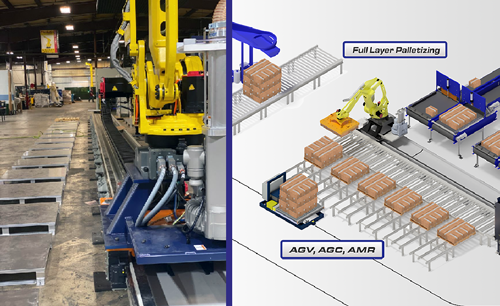
If you are thinking about adding some robotic end of line solutions to your process, explore these options in comparison to your current issues and consider how they can improve your project ROI.
In conclusion, you know how much simple errors cost you, and if you can eliminate those errors, you can eliminate the costs. You might find that eliminating one quality error in your process will quickly pay for the robotic automation.
We have had numerous customers approach us who have had their end customers threaten them with termination as a supplier if they could not ship product that met their quality standards. Robotic automation is a fundamental tool for being able to meet required quality thresholds and to improve your standing with your end customer. At the same time, quality inspection processes can improve product flow reliability and efficiency within your operation, eliminating expensive and time-consuming interruptions to your production output.

